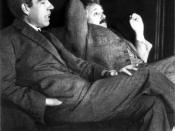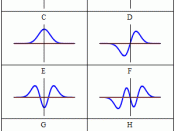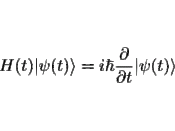Earlier debates on the nature of light: waves or particles? 17th century physicists held two views concerning the behavior of light. One theory was supported by Newton, the genius of mechanics, who naturally followed the corpuscular theory, in which light was made up of particles. The alternative was suggested by Huygens, who believed that light behaved like it was made up of waves. These waves propagated through the ?luminiferous ether?. Since there wasn?t experimental evidence to distinguish between the two theories, the conflict could not be resolved. Despite this, observations and predictions favored Newton and the corpuscular theory. After all if light behaved like waves then it could bend around corners and we would ?see through walls?. With this thought the wave theory was set aside for a while; yet not forgotten? In the early 19th century, Young performed his famous two slit experiment, which implied that indeed light was a collection of waves.
Although Young?s theory did not contradict experimental evidence it wasn?t accepted largely because of patriotism in England and ?loyalty? towards Newton?s ideas until Fresnel, a Frenchman, provided a complete explanation of the behavior of light based largely on Young?s work.
The atomic theory Towards the 20th century different theories had been proposed leading to and regarding the atomic theory. Maxwell and Boltzmann worked on the behavior of gases using the concept of atoms. At the time no direct proof of the existence of atoms existed, so the atomic hypothesis was strongly opposed by leading physicists. Unfortunately Boltzmann, taken ill and depressed and frustrated due to this opposition, killed himself, totally unaware of the fact that Einstein had already proved the existence of atoms leaving no doubt on the subject.
With the discovery of electrons and radioactivity later on, Rutherford proposed his atomic model: A ?cloud of...


